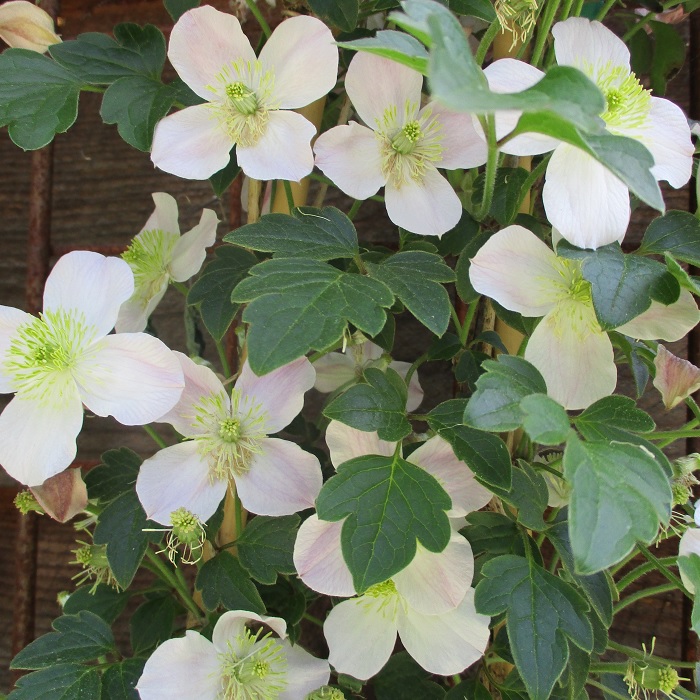Anyone can plant a grapevine. With a bit of work, almost anyone can make a grapevine grow. Most who put forth the effort can figure out how to prune and cultivate a grapevine. Yet, grapevines so often get very out of control. They easily escape confinement, overwhelm nearby plants, climb into trees and overburden their trellises or arbors. It is easy to forget how aggressive they can be.
The primary problem with aggressive vines is that they require pruning for confinement. The most aggressive vines need the most aggressive pruning. Grapevines can actually be quite docile if pruned properly. Chinese wisteria and red trumpet vine need even more aggressive pruning, and will never be completely tamed. It is important to know the personality of each vine in the garden.
The secondary problem with aggressive vines is they are expected to conform to unrealistic confinement. Small trellises that are lower than about eight feet, including common gate arbors, spires and obelisks, are really only big enough to accommodate docile small vines like clematis (hybrid), American wisteria, well pruned mandevilla and vining annuals like morning glory and pole bean.
Chinese wisteria, large types of bougainvillea and other big and heavy vines need big and stout trellises or arbors. Lattice will not do. Chinese wisteria becomes entangled with lattice, and then crushes it as the stems expand. Bougainvillea does the same to a lesser extent, but then pulls the lattice apart as the intertwined stems sag from the increasing weight of foliage and growing vines.
Clinging vines like creeping fig and Boston ivy present another problem. They are not interested in trellises or arbors. They do not grab onto support by twining stems or tendrils. They instead cling directly to surfaces with specialized aerial roots that damage paint, stucco or even bare wood fences. Clinging vines should therefore only be allowed to climb surfaces that they will not ruin, such as concrete walls. They are better vines for freeway soundwalls than for home gardens.
highlight: anemone clematis
Like Ginger and MaryAnn, choosing between the flashier hybrids of clematis and the anemone clematis, Clematis montana, might not be so easy. The fancier hybrids have the bigger, bolder and richly colored flowers that the genus is known for. Anemone clematis has smaller and more subdued flowers in soft pastel hues, but is more prolific, more vigorous, and blooms for nearly a month.
The simple spring flowers look something like those of dogwood, except that they are on wiry deciduous vines that are already outfitted with new foliage. Most are soft white with only four petals and prominent yellow anthers. Some are blushed, pale pink, rose pink or pinkish mauve; and some have more petals or fluffier ‘double’ flowers. The largest flowers are a bit wider than two inches.
The vines are more vigorous than those of clematis hybrids, but are not as aggressive as most other vines or winter clematis. With pruning, they can behave on small gate arbors, although shorter trellises would probably be too confining. If vines escape confinement, they can eventually climb more than thirty feet. The distinctively lobed trifoliate leaves are olive drab, and handsomely rustic.






